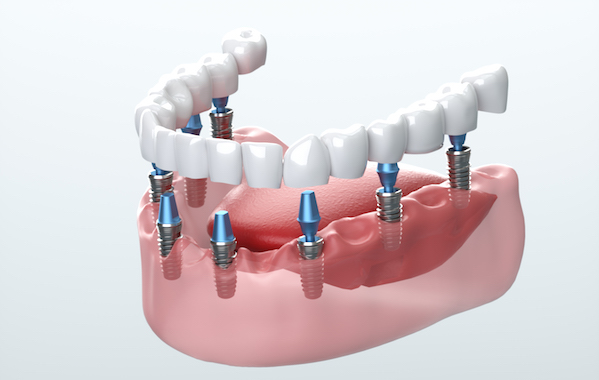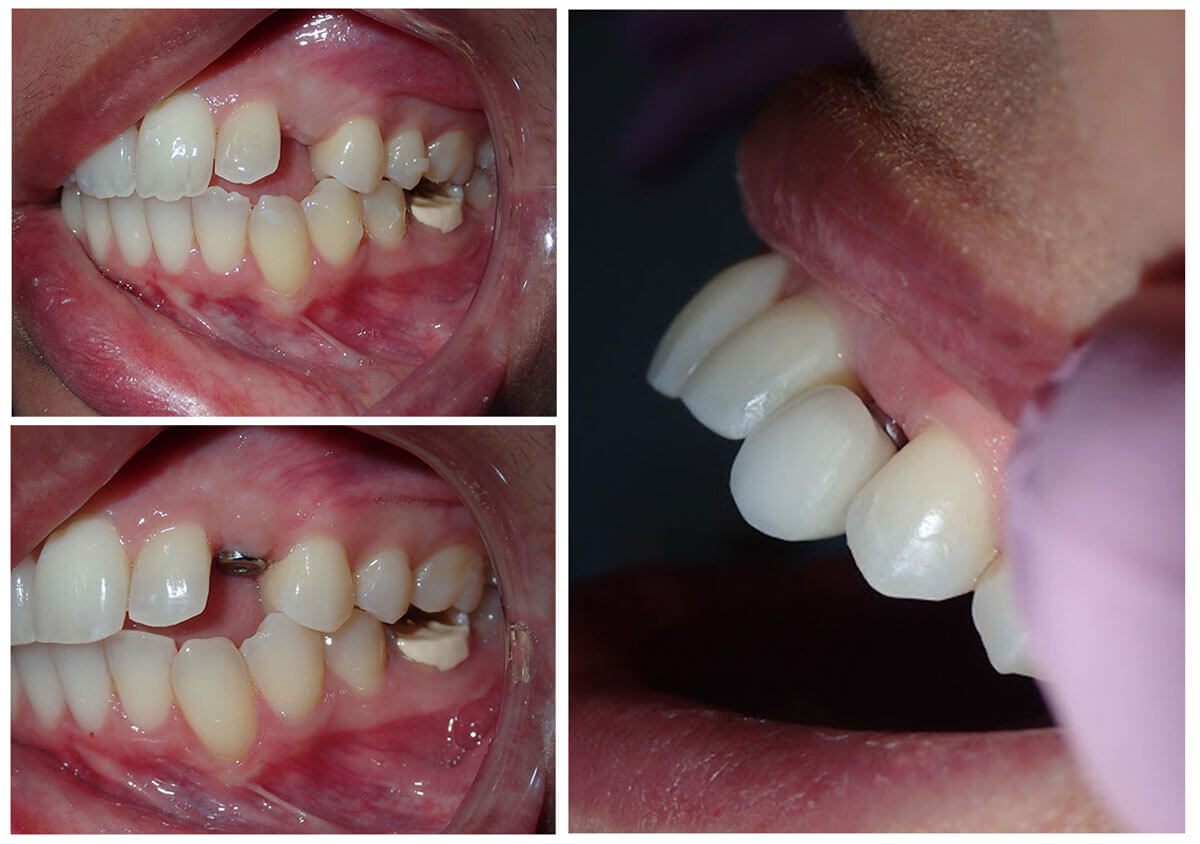Rumored Buzz on Dental Implants
Rumored Buzz on Dental Implants
Blog Article
The 45-Second Trick For Dental Implants
Table of ContentsHow Dental Implants can Save You Time, Stress, and Money.Getting My Dental Implants To WorkSee This Report on Dental ImplantsAbout Dental Implants
are medical devices operatively dental implanted into the jaw to recover an individual's ability to chew or their look. They supply support for man-made (fake) teeth, such as crowns, bridges, or dentures. When a tooth is lost as a result of injury or condition, an individual can experience complications such as rapid bone loss, malfunctioning speech, or adjustments to chewing patterns that cause discomfort.
Framework of The Dental Implant System picking dental implants, talk to your dental supplier concerning the prospective advantages and threats, and whether you are a prospect for the treatment. Points to take into consideration: Your overall health and wellness is an important aspect in determining whether you are an excellent candidate for dental implants, how much time it will take to heal, and how much time the dental implant may remain in location.
Smoking might influence the recovery process and reduce the long-lasting success of the dental implant. The healing process for the implant body might take several months or longer, throughout which time you usually have a temporary joint instead of the tooth. the oral implant procedure: Carefully comply with the dental health guidelines offered to you by your dental company.
Not known Facts About Dental Implants
Implant failing can result in the need for an additional surgical procedure to take care of or replace the implant system. Restores the capacity to eat Brings back aesthetic look Assists maintain the jawbone from shrinking because of bone loss Maintains the health of the surrounding bone and periodontals Aids maintain surrounding (close-by) teeth secure Boosts high quality of life Damages to bordering all-natural teeth during dental implant positioning Injury to the surrounding cells throughout surgery, such as sinus opening Injury throughout surgical treatment (as an example, fracture of surrounding jawbone) Insufficient function, such as really feeling like the teeth do not bite together typically A feeling that the tooth is loosened or turning in location resulting from an abutment screw loosening up Implant body failing (looseness of the dental implant body) because of systemic infection, which might be much more most likely in individuals with unrestrained diabetes mellitus because of local infection in bone and gums supporting the dental implant body as a result of delayed recovery, which may be more probable in people that smoke Problem cleansing the periodontals around the dental implant, causing poor dental hygiene Unattended periodontal disease Post-surgical pins and needles because of nerve impingement or damages Constantly inform healthcare carriers and imaging technicians that you have dental implants prior to any magnetic resonance imaging (MRI) or x-ray procedures.
FDA is not familiar with any type of unfavorable occasions reported for MRI or x-ray treatments with dental implants. Dental implants systems are generally constructed from materials that adhere to global agreement criteria of the International Company for Standardization (ISO) or ASTM International. These requirements have information of what makes a risk-free material.
Dental dental implant systems are assessed according to international consensus standards. Biocompatibility screening, to reveal that physical call with the device does not create issues like inflammation or sensitive response, is component of the examination that assists guarantee the products in the oral implant system are risk-free and do not create unfavorable impacts when implanted in people.

The Of Dental Implants
Some people are not eligible for dental implant surgery. It is for dental surgeons to run on people with: acute illnessuncontrollable metabolic diseasebone or soft cells illness or infectionIf these problems are settled, an individual can have the surgery. Dental Implants. In, oral specialists abstain from operating people with: If people with any one of the above undergo oral implant surgical treatment, there is a higher threat of the implant failing
Some people have a jawbone abnormality that avoids sufficient bone for an implant from establishing. In such cases, a doctor may require to carry out a ridge adjustment. This involves raising the gum tissue to subject the area of warped bone. The doctor will certainly then make use of a bone or bone replacement to repair and develop the area.
Oral implant surgery is a customized procedure. It's not the same for everyone. But the adhering to gives a basic introduction of what you can anticipate your dentist, dental specialist, periodontist or prosthodontist to do: Place the dental implant surgically. Provide you time to heal. Attach the article and final crown, bridge or denture.
Next off, your doctor will meticulously place the oral implant into your jaw. Lastly, your doctor will reposition your gums and close the laceration with stitches. If your dental implant is near the front of your mouth, your dental expert will make a momentary tooth for you to wear important site up until you heal. This way, you will not have a void in your smile while you recover.
A Biased View of Dental Implants
Your copyright can tell you what to anticipate in your scenario. Throughout the recovery stage, your jawbone must fuse to the dental implant. This procedure, called osseointegration, is crucial for security and lasting success. This process can take anywhere from 3 to nine months. Sometimes, it might take much longer.
As soon as your implant heals, your dentist can affix the joint (small adapter message) and your last repair (crown, bridge or denture). This typically takes concerning one hour to finish and might call for a 2nd minor surgical treatment. You shouldn't this content feel any kind of discomfort during your dental implant procedure due to the fact that your company will make use of drug to numb your gums.
Report this page